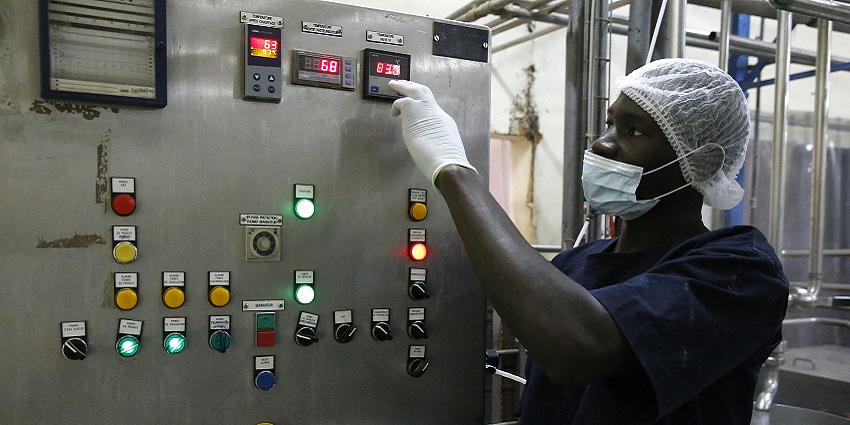Harmony between social and economic performance is possible
By Hélène Sananikone, Grameen Crédit Agricole Foundation

© Philippe Lissac
"Social" and "business" are two terms that have long been considered contradictory and continue to be so for many. However, there are economic models that structurally aim to reconcile social impact and economic development on the same level. In the early 2000s, Professor Yunus laid the foundations of a model with these characteristics: "social business," which can be translated by the generic term "social enterprise." Like any traditional business, it seeks to achieve financial profitability, but it must, at the same time, meet its objective of social utility, which is integrated into the heart of its governance and operations.
Displaying a profitability profile when considering social impact is not a simple equation because this objective entails additional costs for the company. The break-even point necessarily takes longer to reach, and mechanically, the need for equity is often greater, but the equation is far from impossible.
Indeed, when leaders are driven by a deep determination to create positive externalities through their company's value creation, they find ways to generate social impact and sustain their actions. Increasingly sought after, this model combining impact and profitability is increasingly emerging as a model for the future. At the Foundation, we are seeing more and more companies seeking to serve low-income customers (Base of Pyramid, BoP) by leveraging the volume effect but also by sharing costs across a wide range of products. In these cases, the social objective proves to be a lever for wealth creation. A success story that illustrates this point: Laiterie du Berger, a Senegalese social enterprise in which the Grameen Crédit Agricole Foundation is a shareholder.
La Laiterie du Berger, an entrepreneurial adventure
La Laiterie du Berger is a story of Senegalese family and friends who believed in the possibility of structuring a milk production sector in Senegal. The project, initially, was to offer an economic model to Fulani herders to enable them to increase their income and, therefore, their standard of living through a model for producing, collecting, and promoting Senegalese milk.
When this project was first developed, many thought it was impossible: using fresh Senegalese milk in the manufacture of dairy products is a bit like building an oasis in the desert: very expensive and uncompetitive compared to competitors who only use powdered milk imported directly from major producing nations.
Faced with these difficulties, the project leaders sought to partner with long-term industrial and financial partners and then build a milk value chain model together. Laiterie du Berger thus developed a hybrid model by combining the promotion of locally produced milk with the use of powdered milk to reduce industrial production costs. The company also developed an umbrella brand, "Dolima," covering a range of affordable dairy products aimed at populations with varying incomes but all concerned about consuming dairy products. The company recently supported its growth around the slogan "Good for me, good for my country," which has enabled the "Dolima" brand to become a national reference.
After 12 years of operation, Laiterie du Berger offers a wide range of well-segmented dairy products and has now reached economic breakeven. The plant is operating at full capacity, and new investments are being considered to keep pace with demand for Dolima products.
Thanks to the tenacity of its founder and co-shareholders, the company has always been vigilant about its social mission while facing many years of implementing its own economic model. It is thanks to the mastery of the agricultural value chain, from "farm to fork" or "from breeder to consumer," that this project was not only able to see the light of day but, above all, to reach its break-even point. This took 10 years.
A future to share between Franche-Comté and Senegal
A second chapter will now open thanks to the arrival of a new shareholder: Crédit Agricole Franche Comté. Following a "Solidarity Banker" mission in June 2018, the regional bank agreed to second an agricultural engineer for two years to join KOSAM 2, a project whose ambition is to structure a dairy sector. The territorial issues of northern Senegal are in fact close to the history experienced in Franche-Comté during the creation of the Comté Appellation d'Origine Contrôlée (AOC) and the promotion of livestock milk production. The objective is to sustain the income of livestock farmers by strengthening their production capacity and thus ensuring that Laiterie du Berger has the necessary supply to develop its specific range.
The story of Laiterie du Berger shows us that, although complex, the marriage of profitability and social impact is possible. At the Grameen Crédit Agricole Foundation, we are convinced of this and will continue, alongside our partners, to promote this vision of the future of business and sustainable finance.



Leave a Reply
Want to join the discussion?Feel free to contribute!